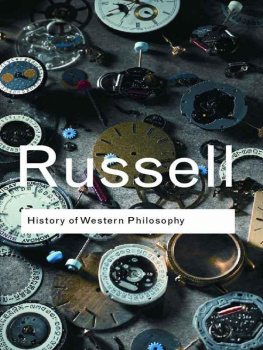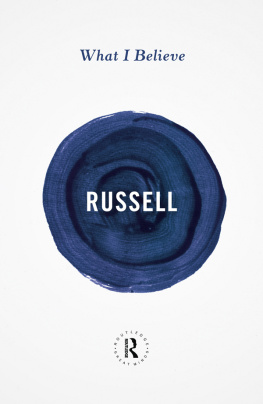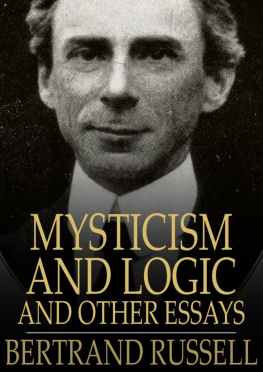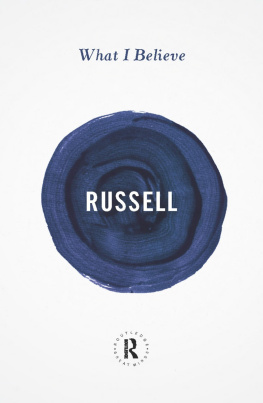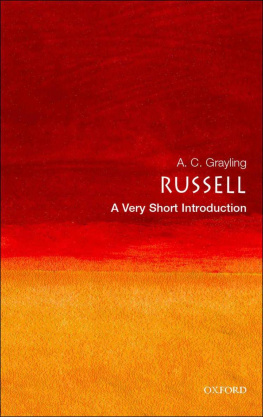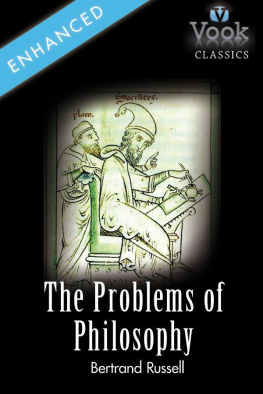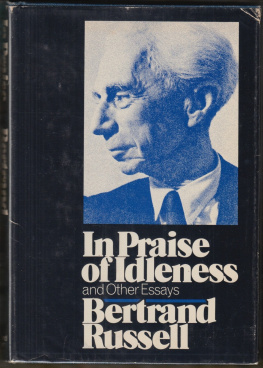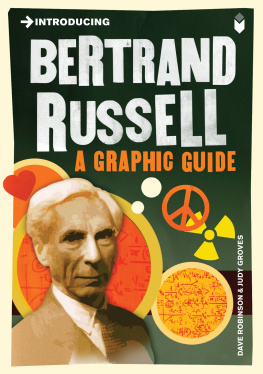
The Scientific Outlook
'The core messages of this book still have something to say.'
The Spokesman

Routledge Classics contains the very best of Routledge publishing over the past century or so, books that have, by popular consent, become established as classics in their field. Drawing on a fantastic heritage of innovative writing published by Routledge and its associated imprints, this series makes available in attractive, affordable form some of the most important works of modern times.
For a complete list of titles visit
The Scientific Outlook
Bertrand Russell
London and New York
This edition first published in 1931
by George Allen & Unwin Ltd, London
First published in Routledge Classics 2009
by Routledge
2 Park Square, Milton Park, Abingdon, Oxon OX14 4RN
Simultaneously published in the USA
by Routledge
270 Madison Ave, New York, NY 10016
Routledge is an imprint of the Taylor & Francis Group, an informa business
This edition published in the Taylor & Francis e-Library, 2008.
To purchase your own copy of this or any of Taylor & Francis or Routledges collection of thousands of eBooks please go to www.eBookstore.tandf.co.uk.
2009 The Bertrand Russell Peace Foundation Ltd
Preface 2001 David Papineau
All rights reserved. No part of this book may be reprinted
or reproduced or utilized in any form or by any electronic,
mechanical, or other means, now known or hereafter
invented, including photocopying and recording, or in
any information storage or retrieval system, without
permission in writing from the publishers.
British Library Cataloguing in Publication Data
A catalogue record for this book is available from the British Library
Library of Congress Cataloging-in-Publication Data
Russell, Bertrand, 18721970.
The scientific outlook / Bertrand Russell.
p. cm. (Routledge classics)
Originally published: London : George Allen & Unwin, 1931.
Includes bibliographical references and index.
1. Science. 2. Civilization, Modern. I. Title.
Q158.R8 2009
500dc22
2008045897
ISBN 0-203-87538-9 Master e-book ISBN
ISBN10: 0-415-47462-0 (pbk)
ISBN13: 978-0-415-47462-7 (pbk)
ISBN10: 0-203-87538-9 (ebk)
ISBN13: 978-0-203-87538-4 (ebk)
Copyright 2007/2008 Mobipocket.com. All rights reserved.
Reader's Guide
This ebook has been optimized for MobiPocket PDA.
Tables may have been presented to accommodate this Device's Limitations.
Table content may have been removed due to this Device's Limitations.
Image presentation is limited by this Device's Screen resolution.
All possible language characters have been included within the Font handling ability of this Device.
CONTENTS
by
David Papineau
PREFACE
by David Papineau
The first edition of The Scientific Outlook was published in 1931, when Bertrand Russell was 59. By this stage of his life he was a prominent public figure. His brave stand against conscription during the First World War, and his consequent imprisonment, had made him famous, and through the 1920s he continued to court controversy through his support for progressive causes.
Russell's place in the public eye was maintained by a steady stream of writing for the general reader. He no longer held any academic position, and needed to support himself and his family by his pen. While he continued to do some technical work in philosophy, more of his energies were devoted to journalism and other popular writings. He was in great demand. His distinctive prose and dry wit enabled him to puncture the fusty assumptions of contemporary thinking, and his rationalist alternatives struck many readers as a liberating antidote to conventional morality.
Some of his best writing for a general readership lay in the realm of popular science. Then, as now, there was a large audience eager to understand the significance of new scientific developments. Russell's mathematical training and penetrating mind suited him eminently to this role. By 1931 he had already written The ABC of Atoms (1923) and The ABC of Relativity (1925), as well as Icarus or the Future of Science (1924), the last a pamphlet on the influence of science on modern civilization. In The Scientific Outlook he was able to develop his ideas about the significance of modern science at greater length.
The edition of The Scientific Outlook being republished here is the second edition of 1949, rather than the original 1931 edition. But apart from some half-dozen phrases altered to avoid anachronisms, and the Prefatory Note discussed below, the second edition is identical to the first.
There have been many changes in the seventy years since Russell wrote the book, both within science and without, and some of his claims no longer hold true. Even so, it is striking how much of the book stands the test of time. The intervening years may have brought particular developments that Russell did not anticipate, but his general attitude to science contains many lasting insights.
The Scientific Outlook falls into three sections. The first and longest is on "Scientific Knowledge". It surveys the history and philosophy of science, and then considers what the findings of twentieth-century science might tell us about the underlying nature of reality. Russell's targets here include his physicist-knight contemporaries Sir James Jeans and Sir Arthur Eddington, along with anybody else who takes the mysteries of modern physics to provide evidence for a Deity. The second section of the book covers "Scientific Technique". This is relatively brief, and mostly details various ways in which science has generated new technologies in the past. But it also contains predictions about future possibilities for scientific technique, especially in the human and social realm. These possibilities are developed further in the final section of the book, on "The Scientific Society".
This final section is the most remarkable part of the book. It paints a dystopic vision of future society. All aspects of life will come to be controlled within totalitarian states. Forms of democracy may be retained, but real power will pass to a small group of scientific experts. The economy, along with education, reproduction, and entertainment, will be centrally regulated, with the help of scientific propaganda techniques. Most of the population will be sterilized, and propagation restricted to a small selected group. Sexual relations among the sterilized will become unrestricted. Children will be educated either to be governors or workers, with especial care taken to ensure that the governors learn to value the State over any personal attachments.
These ideas have since become the staple of a hundred futuristic stories. But at the time they were not yet common currency. As Russell himself observes, in the Prefatory Note to the second edition of The Scientific Outlook in 1949
"The material of the last few chapters may seem now more familiar than at the time of the first edition, since it has been popularized in two widely read books, Huxley's Brave New World and Burnham's Managerial Revolution. I do not suggest that my book had any influence on either of these, but the parallels are interesting, and will, I hope, persuade the reader that my fears are more than an individual phantasy."
Next page






